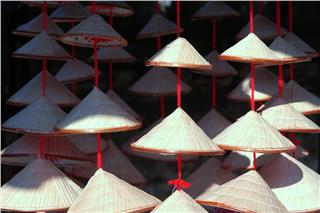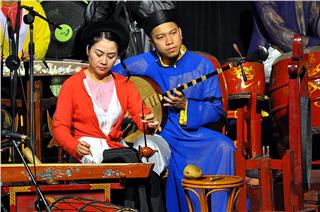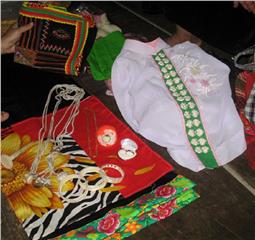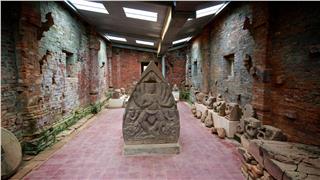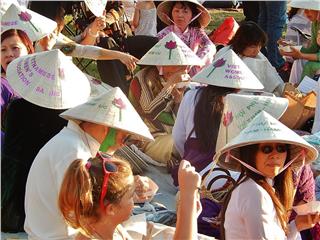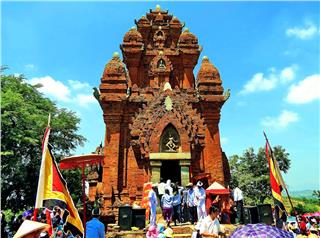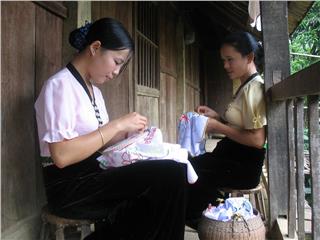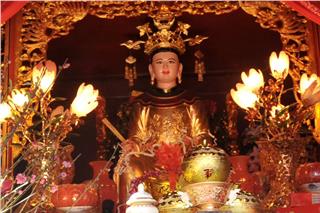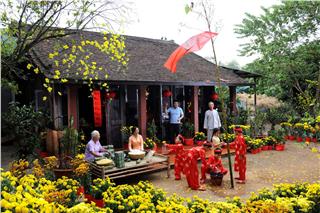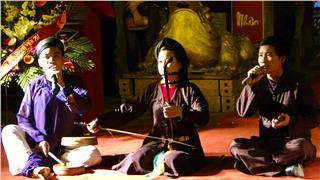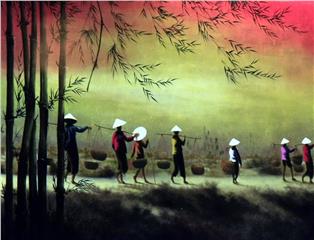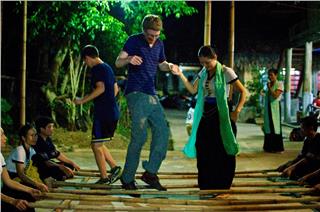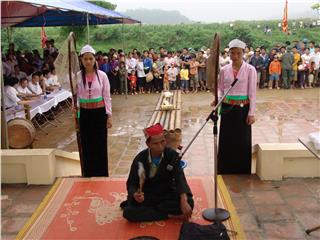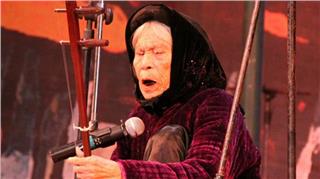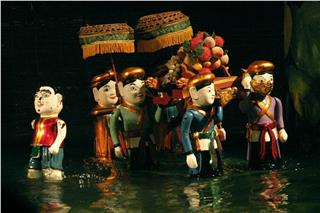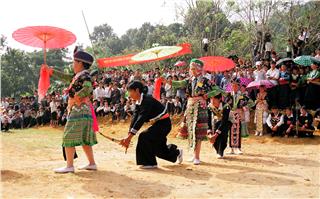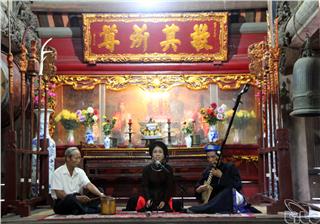Beauty of Pa Then ethnic culture
Tue, 17 Mar 2015 . Last updated Thu, 25 Jun 2015 09:02
-
 Vietnam – The S-shaped country 10092 viewed
Vietnam – The S-shaped country 10092 viewed -
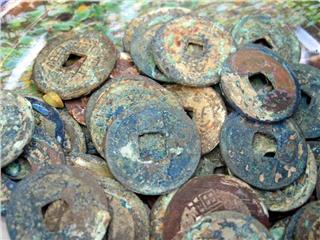 Ancient Vietnamese coins – Episode 1 9425 viewed
Ancient Vietnamese coins – Episode 1 9425 viewed -
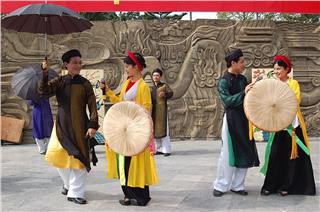 Special cultural features of Quan Ho singing 8586 viewed
Special cultural features of Quan Ho singing 8586 viewed -
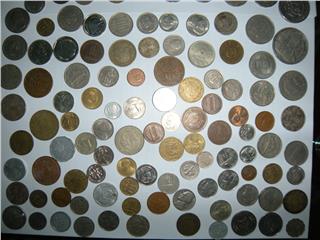 Ancient Vietnamese coins – Episode 2 8399 viewed
Ancient Vietnamese coins – Episode 2 8399 viewed -
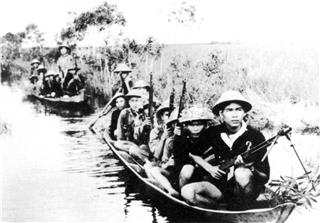 Vietnam History 1858-1945 7168 viewed
Vietnam History 1858-1945 7168 viewed -
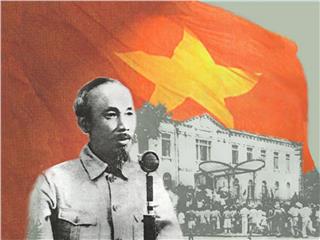 The Vietnamese Proclamation of Independence 6690 viewed
The Vietnamese Proclamation of Independence 6690 viewed -
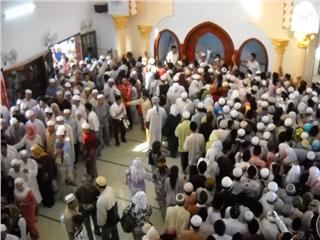 Cham Muslims in An Giang 6123 viewed
Cham Muslims in An Giang 6123 viewed -
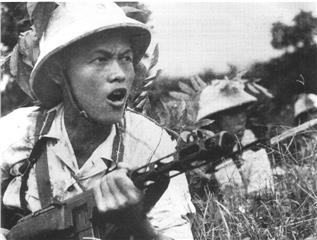 Vietnam history 1945-1954 6002 viewed
Vietnam history 1945-1954 6002 viewed -
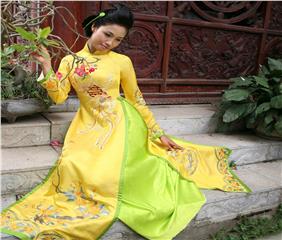 Predestined love tie with Ao Dai - Vietnamese long dress 5706 viewed
Predestined love tie with Ao Dai - Vietnamese long dress 5706 viewed
Each ethnic minority group has a vital color contributing to the abundance of Vietnamese culture. Among them, we cannot but mention the uniqueness of Pa Then ethnic culture in Ha Giang province.
Pa Then ethnic group has more than 5000 members mainly living in the two districts of Bac Quang and Quang Binh of Ha Giang province and Chiem Hoa district of Tuyen Quang province. Before the 1990s, Pa Then ethnic people lived in remote and mountainous areas. They were self-sufficient and earned their livings mainly from terrace farming. In the 1980s, they moved down to lowland areas such as My Bac hamlet, Tan Bac commune, Quang Binh district, Ha Giang province today.
Pa Then ethnic people sustained their lives by terrace farming, wet rice farming and cultivation of crops. Living next to other ethnic groups, Pa Then ethnic culture in general and spiritual beauty of traditional costumes of Pa Then woman in particular remain unchanged as many striking features of their culture have been handed down from generation to generation.
When it comes to Pa Then ethnic group, we cannot resist the charming beauty of costumes of Pa Then ethnic women. The costumes not only protect human bodies but also carry high aesthetic value thanks to scarlet threads. The headscarf of Pa Then ethnic women is pretty special. Before wearing the headscarf, they roll their hair tidily to support the headscarf. The headscarf is wrapped up into round layers. It looks similar to that of Kinh ethnic women but has a larger diameter. Remarkably, it is decorated with clusters of colorful thread tassels which cascade down onto the wearer’s ears.
Elderly women or women with mature children wear a simple headscarf like this. It can be said that Pa Then women’s headscarf is more than a hair accessory because it distinguishes ages and family conditions of wearers. The most attractive part of Pa Then women’s costumes is the blouse which has no collar but instead has two front flaps that are crossed when worn. The black flap is often longer than the front flaps. The sleeves and the body of the blouse have vibrant warm tone. Young women often wear a white shirt under the red upper blouse. The white collar then will go on top of the red base, making it more beautiful. The belt is tied around the wearer’s waist to keep the costume neat and increase the charm of the wearer.
The red skirt makes the costume more charming. It has folded lines in the upper hem. Its body is grafted from 5 pieces of cloth lengthwise with a well-matched layout. Pa Then women’s costumes are appealing thanks to the harmonious mixture of hand-embroidered brocade pieces and grafted fabrics. On the red foundation are the handy embroidered geometrical shapes while the lower sleeves and two crossed front flaps’ fringes are grafted with black blocs.
Pa Then women adorn themselves with sparkling necklaces and bracelets. Normally, they wear several silver necklaces of different sizes. The sparkling silver necklaces stand out against the red background of the blouse. They often wear pennies on their chest. The pennies will make ear-catching sound when the wearer moves. It can be said that which are reflected clearly through colors and decoration patterns which are unmistakable.
Elaborately-made costumes are not only worn in daily life but also used in rituals and become an indispensable part of Pa Then people’s spiritual life. Pa Then people never stop turning towards their roots. This is reflected clearly through Pa Then women’s costumes. It’s not by chance that the belt has 8 clusters of white thread tassels cascading down around the skirt. The 8 clusters represent their 8 native family lines. It can be said that Pa Then people always turn their mind towards the family and the ancestors.
It takes Pa Then women much time and effort to make sets of costumes. The most difficult step is embroidering decoration patterns so that the patterns rise against the surface of the cloth and contrasting colors are made. They often embroider patterns of different shapes and colors on the same piece of cloth. Thanks to skillfulness, Pa Then ethnic women have long found the way to weave colored threads into fine patterns.
Pa The women work the looms to make unique brocade patterns. The looms have simple structure. There are different ways to combine colored threads to make different patterns. It can be said that the simple looms prove endless creativity of Pa Then ethnic people. With the looms, they have created patterns with high artistic value. After weaving pieces of brocade cloth, Pa Then people graft the pieces together into sets of costumes. As for Pa Then women, weaving and embroidery prove their skillfulness and resourcefulness. It’s a must for women to have husbands.
In spiritual life, Pa Then people believe in supernatural powers and think that everything has a soul. That’s why they conduct many offering rituals in the year. The ritual on the 15th day of the 5th lunar month every year is noticeable. The ritual is to pray for bumper crops. On this day, all families in My Bac hamlet, Tan Bac commune, Quang Binh district, Ha Giang province, makes cakes in the early morning. Adults hurriedly prepare for offerings. Children eagerly wait to deal out consecrated cakes. There is a kind of cake that is made of sticky rice and wrapped in “non” leaves. Among the offerings, “sung trau” (buffalo-shaped horn) cake is the most important and indispensable.
Although “sung trau” cakes are used in spiritual rituals, it’s not difficult to make them. High quality sticky rice, ash, “non” leaves and bamboo laths are required to make the cake. Unlike people of other ethnic groups who soak sticky rice into water before making “sung trau” cakes. Pa Then people wrap sticky rice mixed well with a little ash in “non” leaves and then soak packs of cake into water. With skillfulness, women create conical packs from “non” leaves. Then put sticky rice into the packs before folding up the bottom of the conical packs. The “sung trau” cake is made of sticky rice without stuffing as they think the cake is mainly to show off the tastiness of sticky rice. This is the way they inform the ancestors of the fruits of their labor in the last crop. The packs of cakes are tied into pairs before being boiled.
“Sung trau” cakes are often made by women in the family. Meanwhile, men are in charge of preparing and burning votive paper for the ancestors. Like people of other groups, Pa Then people believe that the dead in the next world have to spend money on all daily activities in the way the living in this world do. That’s why they often burn votive paper on such occasions.
During the festival, many families prepare an offering food tray with many other dishes. On the 15th day of the 5th lunar month, Pa Then people feast their friends and relatives to mark a prosperous year. The offering food tray is prepared heartily. After 2 -3 hors, pairs of “sung trau” cakes are already boiled to a turn. The cakes are offered to the ancestors and the gods. After all the rituals are conducted, family members deal out consecrated pairs of “sung trau” cakes. Like other ethnic groups engaged in agriculture. Pa Then people appreciate buffaloes. Thus, “sung trau” cakes are used as offerings to show off their dream of a prosperous life.
In addition, the “sung trau” cake has another spiritual meaning. It shows off a unique cult in agriculture of Pa Then people. Eagerness of children…Excitement of adults…All Pa Then ethnic people believe that when they offer “sung trau” cakes to the ancestors, the ancestors will keep their buffaloes healthy and then they will definitely harvest bumper crops. The delicious “sung trau” cake also creates a unique cult in agriculture of Pa Then ethnic people.
During free time, Pa Then ethnic mothers often teach their daughters to weave brocade. Brocade weaving and embroidery has become a fine feature of ethnic culture and handed down from generation to generation. Efforts of Pa Then ethnic people to preserve values of traditional culture should be respected. The vitality of the ethnic culture will definitely be preserved for good taking up a decent position in vibrant Vietnamese culture.
Source: VTC10 - NETVIET
- Tags:
- Vietnamese culture
- Ha Giang
- Pa Then ethnic culture
- Pa Then ethnic group
- culture of Pa Then ethnic group

